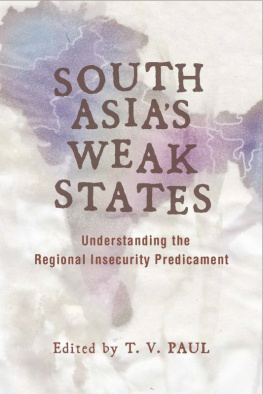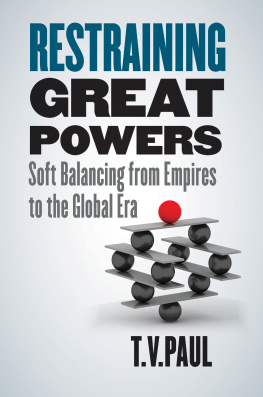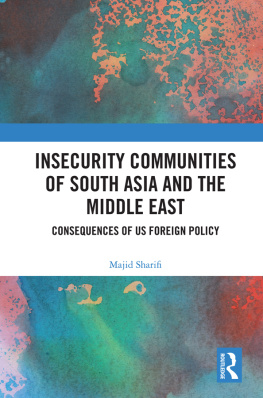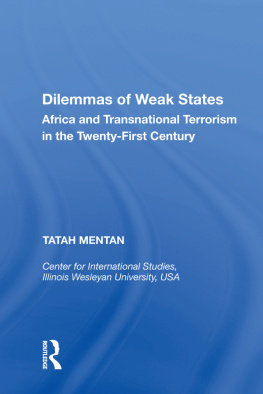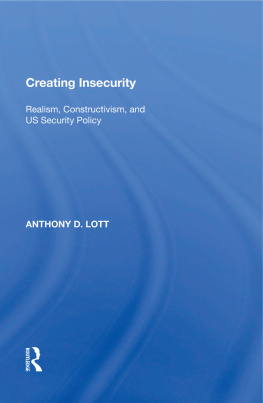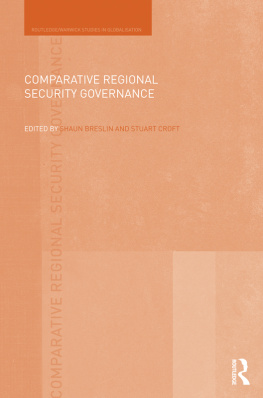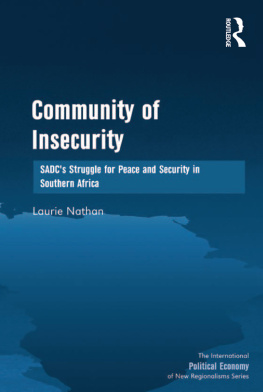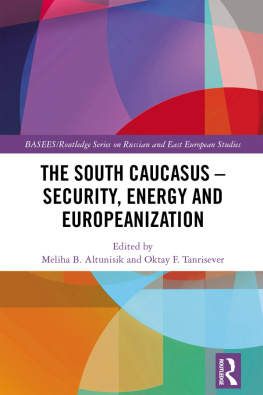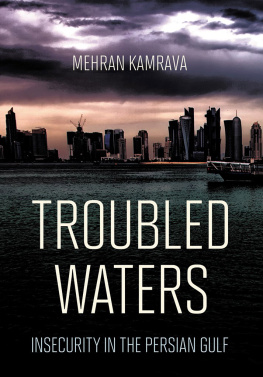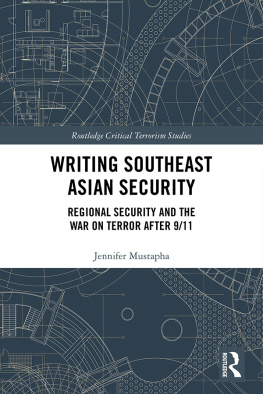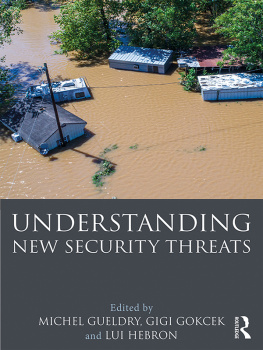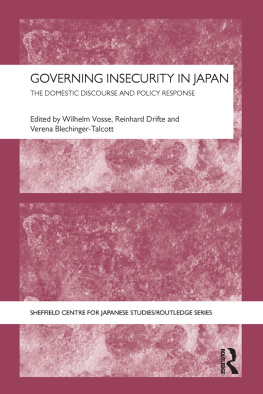SOUTH ASIAS WEAK STATES
Understanding the Regional Insecurity Predicament
Edited by T. V. Paul
STANFORD SECURITY STUDIES
An Imprint of Stanford University Press
Stanford, California
Stanford University Press
Stanford, California
2010 by the Board of Trustees of the Leland Stanford Junior University.
All rights reserved.
No part of this book may be reproduced or transmitted in any form or by any means, electronic or mechanical, including photocopying and recording, or in any information storage or retrieval system without the prior written permission of Stanford University Press.
Special discounts for bulk quantities of Stanford Security Studies are available to corporations, professional associations, and other organizations. For details and discount information, contact the special sales department of Stanford University Press. Tel: (650) 736-1782, Fax: (650) 736-1784
Printed in the United States of America on acid-free, archival-quality paper
Library of Congress Cataloging-in-Publication Data
South Asias weak states : understanding the regional insecurity predicament / edited by T. V. Paul.
p. cm.
Includes bibliographical references and index.
ISBN 978-0-8047-6220-5 (cloth : alk. paper) ISBN 978-0-8047-6221-2 (pbk. : alk. paper) ISBN 978-0-8047-7853-4 (electronic)
1. South AsiaPolitics and government. 2. National securitySouth Asia. 3. Internal securitySouth Asia. 4. South AsiaForeign relations. I. Paul, T. V.
DS341.S687 2010
355.033054dc22
2010011547
Typeset by Bruce Lundquist in 10/14 Minion
In Memory of Professor T. T. Poulose of Jawaharlal Nehru University, New Delhi (19222008)
Teacher, mentor, and a pioneer of disarmament studies in India
Contents
T. V. Paul
Robert I. Rotberg
Matthew Lange
Benjamin Miller
Baldev Raj Nayar
Mustapha Kamal Pasha
David Malone and Rohan Mukherjee
Lawrence Ziring
Rasul Bakhsh Rais
Sankaran Krishna
Ali Riaz
Maya Chadda
T. V. Paul and Theodore McLauchlin
Tables and Figures
Tables
Figures
Acknowledgments
This volume was motivated by a desire to understand the causes of the perennial insecurity challenges that South Asia has been facing ever since independent states emerged in the region. With that in mind, I assembled a group of scholars and practitioners at McGill University in Montreal for a conference in October 2008, where the first versions of these chapters were presented. The main sponsor of the conference was the Research Group in International Security (REGIS). A number of participants, beyond the paper presenters, made very useful observations at the conference that helped the contributors to subsequently revise their arguments. They include Siddharth Banerjee, Sujit Dutta, Christophe Jaffrelot, Saira Khan, Erik Kuhonta, David Malone, Sunil Mani, Daniel Markey, Philip Oxhorn, Vincent Pouliot, Norrin Ripsman, Manish Thapa, and Marie-Joelle Zahar. At the end of the conference, a policy roundtable on the topic Transforming South Asia was held, which was cosponsored by the Canadian International Council and the Center for Developing Area Studies at McGill University.
I would like to acknowledge the generous efforts of Stfanie von Hlatky, who helped to organize the conference, and Theodore McLauchlin and Jessica Trisko, for the copyediting and formatting of the chapters. Theodore also offered many constructive suggestions to the contributors. Others who helped in organizing seminars or other forms of assistance include Amitav Acharya, Rajesh Basrur, Toby Gilsig, G. Gopakumar, Aaron Hywarren, Happymon Jacob, Christopher Manfredi, Amitabh Mattoo, Lawrence Prabhakar, C. Rajamohan, Richard Schultz, and K. M. Seethi. Seminar presentations at the following institutions helped to sharpen the introduction and conclusions of the volume: Academic Staff College, Trivandrum; American University, Washington, D.C.; Bangladesh Institute of International and Strategic Studies, Dhaka; Bangladesh Institute of Peace and Security Studies, Dhaka; Calicut University; Center for Human Rights, Bhubaneswar; Cochin University; Fatima Mata National College, Kollam; Government College, Port Blair; Institute for Peace and Conflict Studies, New Delhi; Jammu University; Kannur University; Kashmir University, Srinagar; Maharajas College, Ernakulum; Mahatma Gandhi University, Kottayam; Mangalore University; S. Rajaratnam School of International Studies, Singapore; Tribhuvan University, Kathmandu; and Utkal University, Bhubaneswar. Financial assistance came from REGIS, the Deans Development Fund, James McGill Chair, Security and Defence Forum (SDF), as well as Fonds qubcois de recherche sur la socit et la culture (FQRSC) and Social Science and Humanities Research Council of Canada (SSHRC) research grants. Stanford University Press editor Geoffrey Burn showed much enthusiasm in the project, and the contributors benefited from the comments of the two anonymous reviewers. The aim of this volume is to generate further thinking on South Asian security and to diversify scholarship beyond the prevailing traditional security approaches within and outside the region. Efforts to explore security challenges comprehensively might lead to more effective policy prescriptions that may require recognition of the multifaceted nature of the South Asian insecurity dilemmas arising from both structural and domestic dynamics.
T. V. Paul Montreal,
October 2009
SOUTH ASIAS WEAK STATES
1 State Capacity and South Asias Perennial insecurity Problems
T. V. Paul
South Asia, which consists of eight states of different sizes and capabilities, is characterized by high levels of insecurity in interstate, intrastate, and human dimensions. Although most emerged as independent nations in the 1940s, the states in the region have not yet been able to settle their several conflictsinternal and externalwhile some have become the epicenters of both traditional and non-traditional security problems, especially transnational terrorism fueled by militant religious ideologies. The region also has not developed adequate institutional mechanisms and normative frameworks for solving its myriad security challenges collectively and nonviolently. One result of this is that even when some conflicts are resolved, others emerge in their place, often leading to the continuation of the cycle of violence in other parts of the region.
What explains the chronic insecurity of South Asia? A large set of variables have been presented in the literature for this multifaceted insecurity problem. They include: 1. irreconcilable national identities; 2. lack of political development (i.e., the absence of proper democratic institutions and procedures); 3. weak economies; 4. unsettled territorial disputes; and 5. lack of regional institutions. As a result, scholarly and policy studies of the regions security problem do not treat it in a way that captures its multidimensionality or the relationship between internal, interstate, and human security dimensions.
I argue that South Asias multidimensional insecurity can be explained largely by two critical factors: the presence of weak states and weak cooperative interstate norms. Both state capacity and weak cooperative norms act largely as intervening variables in causing regional insecurity, as they themselves may be caused by other underlying factors, which I do not cover in this chapter. Other chapters in this volume treat more closely the underlying factors for the weak state syndrome, such as difficulties with state formation and state consolidation in South Asia. It should be noted that state strength alone need not alleviate interstate insecurities, but in some instances it may exacerbate them. Hence, the need for states that observe norms of cooperation, nonintervention and territorial integrity is all the more important for regional security. Moreover, state capacity becomes very crucial in dealing with internal security challenges, which tend to generate interstate conflicts, especially in South Asia.

